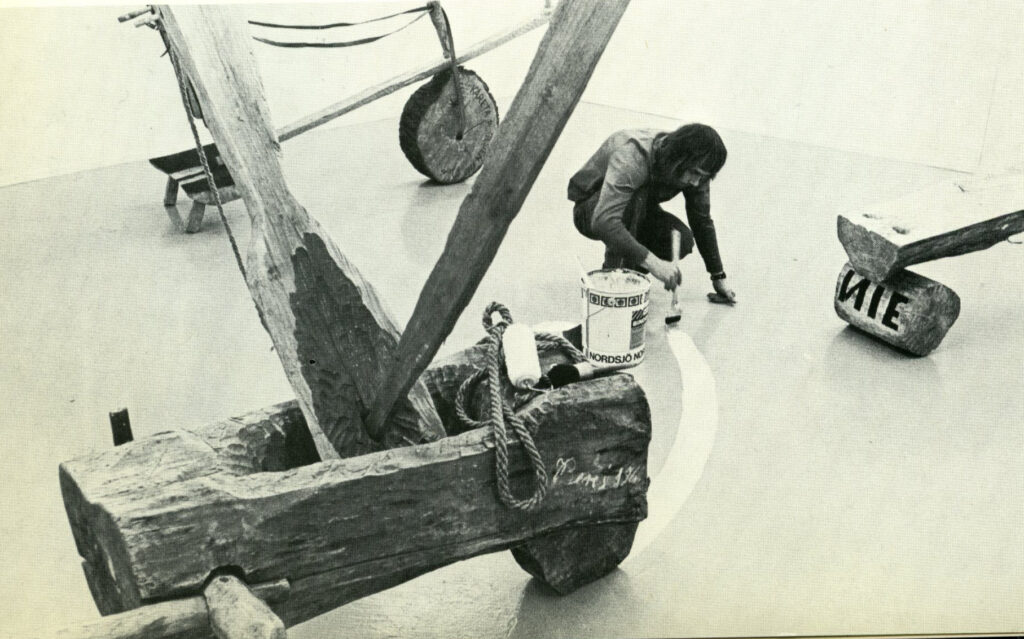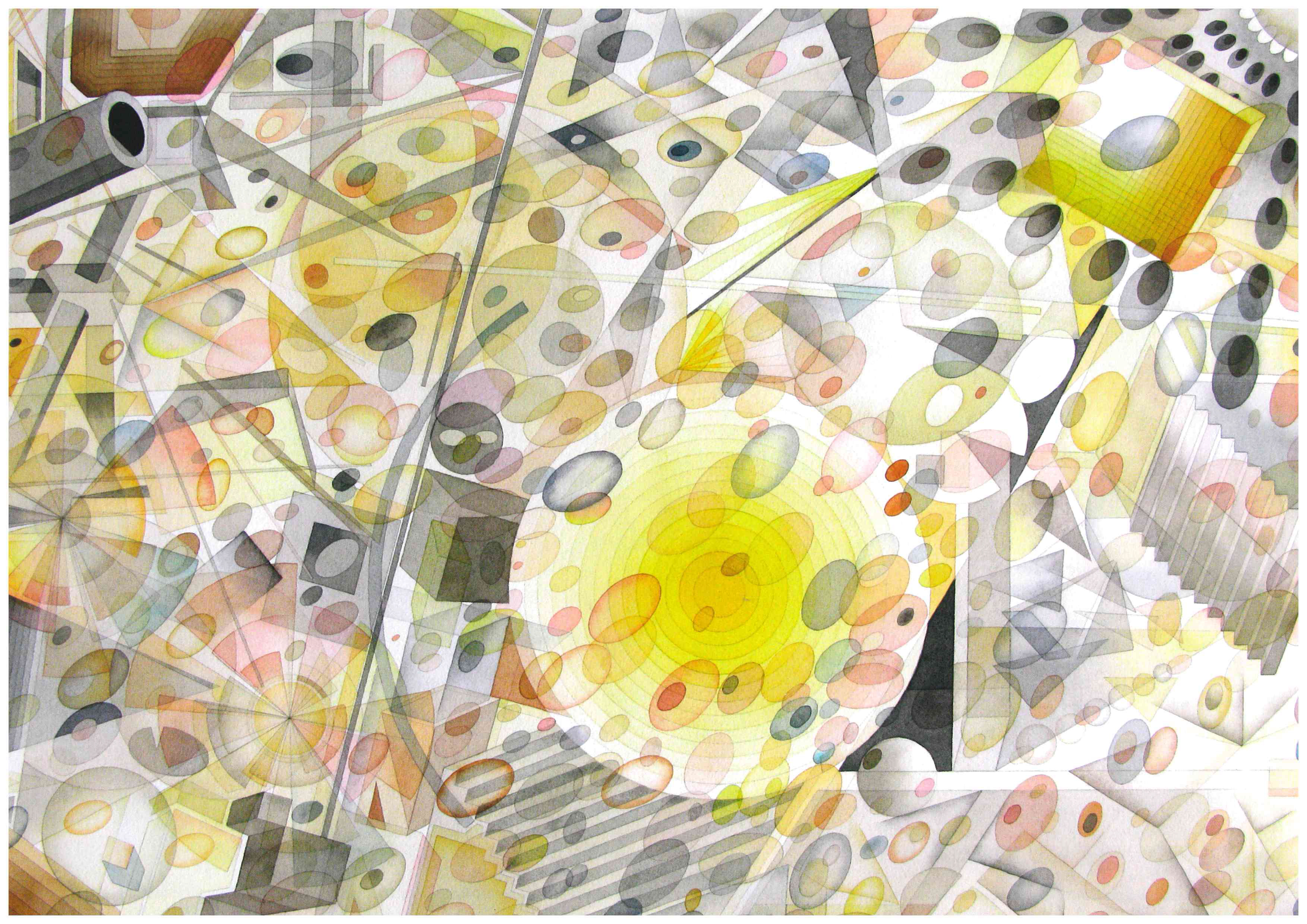


With the watercolor in contemporary art as the theme, the curator / art educator and catalog author Maarit Nilsson Polet brought together four active artists. “Here, the watercolor as a medium is given a major role – through it we look at and compare the works of the four storytellers.”
“The exhibition could be called Borderland, to be on the border of something else, to be somewhere else, in another country, a different reality. The artists’ worlds of motifs – a girl’s transformation into a woman, staying in her memories, collections of color that are almost transformed into landscapes in the viewer’s eye and images from other dimensions. This borderland has the artists in common. ” This is how Maarit explains the cohesive intention in the preface.
Erik Jeor describes the process of laying the front of the paper against the terry and at the same time wetting the back. Then mount the flat paper against a plywood board. “The moisture is read on the paper and new channels are drawn with the brush. The water channels provide a sharp edge to the dry. Pigments are allowed to float around with the help of the surface tension of the water, at the rate determined by the slope of the paper and its susceptibility. The movement is repeated, guarded, knocks out the traces of previous movement, or to change the trajectory of the painting. Initially, chance rules. Patience, wait and boredom play their roles spontaneously. In the monotonous repetition, characters are evoked – in the tension between control and chance. The spring-light immediacy of watercolor – the strength of the working method. ” Heli Sammalisto tells in the catalog about a childhood and youth on an island far out in the Finnish western outer archipelago. That she lives and creates there every six months, the other half in the city. “I have always been interested in the human face, the reflection of the life lived. My archipelago family’s old family photographs and the accompanying life stories have been of great importance in my work. ”
Astrid Svangren puts Japanese tissue paper in a dye bath where the watercolor mixes with liquids or dust, e.g. orange juice, orange oil and seashell powder. The creation of the work is reminiscent of a ritual, she says, where she loads the object with something, e.g. a piece of nature, Maarit writes in the interview she has done for the catalog.
-In recent years, I have investigated how art has connections to the occult world and different esoteric traditions. Religion, religious experiences, trance states and meditation are important components in my artistic work and in my life, says Fredrik Söderberg.
Sources: Exhibition catalog: p. 4,6,8,10,12